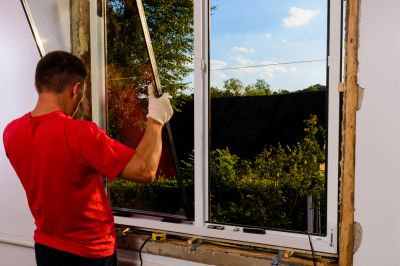Optimal Timing for Windows Installations
Windows installations are a critical component of maintaining optimal computer performance and security. Timing can influence the success and efficiency of the installation process, with considerations including system readiness, software updates, and user availability. Properly scheduled installations can minimize disruptions and ensure compatibility with existing hardware and applications.
Spring and fall often provide optimal conditions due to moderate temperatures and lower system usage, reducing the risk of interruptions.
Early mornings or late evenings are recommended to avoid peak usage hours, allowing sufficient time for completion without impacting productivity.
Scheduling during periods of low network traffic and ensuring backups are completed beforehand can prevent data loss and connectivity issues.
Timing installations after major hardware or software updates ensures compatibility and reduces the likelihood of conflicts.

Technicians preparing a system for Windows installation.

Calendar and planning tools for optimal timing.

Upgrading hardware components before installation.

Ways to make Windows Installations work in tight or awkward layouts.

Popular materials for Windows Installations and why they hold up over time.

Simple add-ons that improve Windows Installations without blowing the budget.
| Aspect | Details |
|---|---|
| Season | Spring and fall are preferred for moderate weather and system stability. |
| Time of Day | Early mornings or late evenings are ideal for minimizing disruptions. |
| Preparation | Complete backups and ensure hardware readiness before scheduling. |
| Update Compatibility | Timing after major updates reduces conflicts. |
| Operational Impact | Schedule during low-traffic periods to maintain productivity. |
| System Readiness | Ensure all drivers and software are up-to-date beforehand. |
| User Availability | Coordinate with users to choose convenient times. |
| Network Conditions | Avoid peak network hours to ensure smooth installation. |
Windows installations involve updating or replacing operating system components to improve functionality, security, and user experience. Proper timing ensures minimal downtime and reduces the risk of issues during the process. Regular updates and installations are vital for maintaining system integrity and performance, especially in environments requiring high security and reliability.

Initial setup and configuration of Windows.

Professional installation process.

Verifying system compatibility before installation.

Final steps after Windows setup.
Interested in scheduling a Windows installation? Filling out the contact form can help identify the best timing for system updates and ensure a smooth transition. Properly timed installations contribute to enhanced system security and performance, supporting ongoing operational needs.



